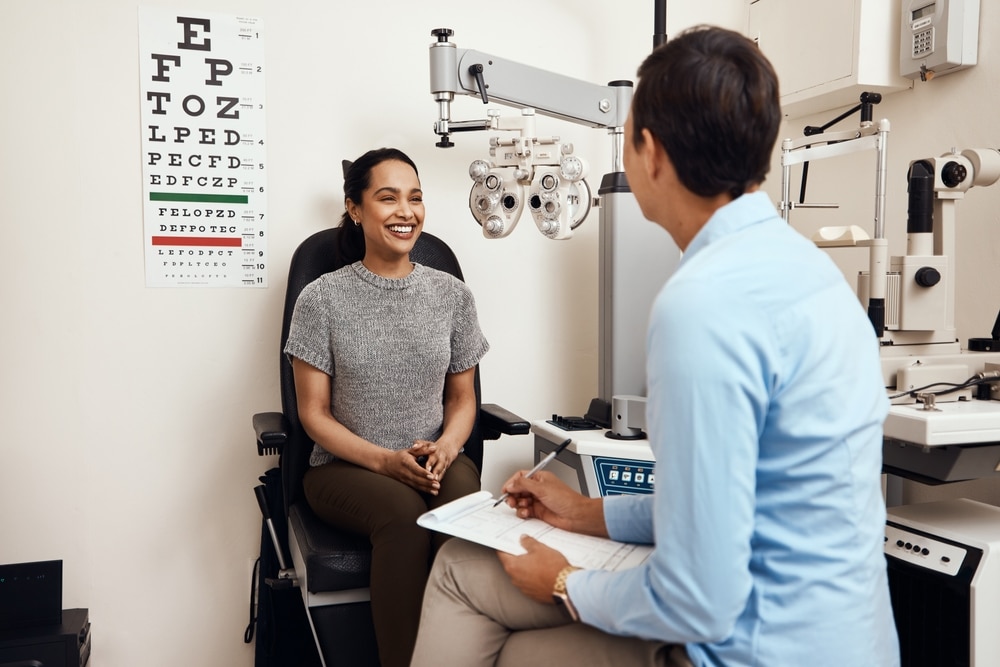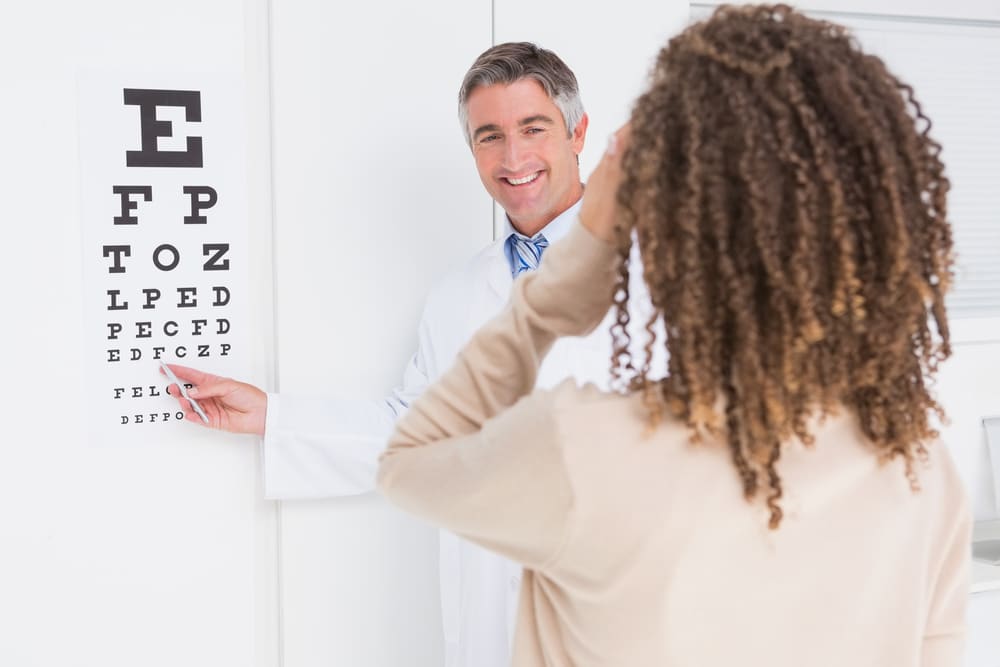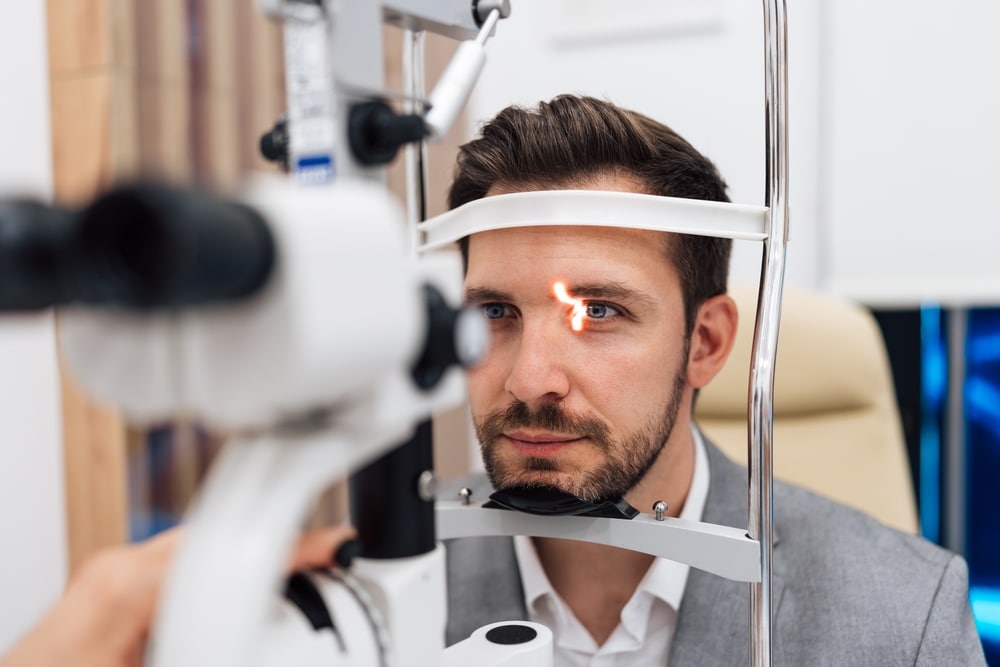Has it been a while since your last eye exam? If so, you should consider scheduling an appointment with your eye doctor soon.
Getting your eyes examined is essential not only for maintaining good vision but also for protecting the health of your eyes. Knowing what to expect can help you prepare beforehand and know whether to book with an optometrist or ophthalmologist for your next eye exam.
Keep reading to learn what you should expect at your next eye exam with your eye doctor.
What is a Comprehensive Eye Exam?

Annual or semi-annual eye exams are sometimes referred to as routine eye exams. However, not all routine eye exams are comprehensive.
A routine eye exam often refers to basic vision testing and updating your prescription. This is usually conducted by an optician or optometrist.
These quicker exams may include minimal screening for eye health conditions, but they are not in-depth. If you wear glasses or contacts, you likely attend these yearly appointments with your optometrist to update your prescription.
What most patients don’t know is that even if you are undergoing yearly exams with your optometrist, comprehensive eye exams with an ophthalmologist are still essential to protecting the health of your eyes.
They are particularly crucial if you’re over 40 or at higher risk for eye conditions like glaucoma, macular degeneration, and diabetic retinopathy.
What Happens During a Comprehensive Eye Exam?
During your comprehensive eye exam at Traverse City Eye, your ophthalmologist may:
Go Over Your Medical History
Whether it’s your first visit or you’re a regular patient, your eye doctor will review your personal medical history and family medical history. Your medical history includes any medical conditions you may have, previous surgeries you’ve undergone, and medications you’re taking.
Understanding your medical history helps your eye doctor assess your risk for various eye conditions. Many eye conditions have a genetic factor, making family medical history equally important.
Perform Visual Acuity Testing and Refraction

Visual acuity testing is a common aspect of eye exams. This exam involves looking at a chart with rows of letters and reading progressively smaller sizes to determine whether you have 20/20 vision.
While visual acuity testing provides a general overview of your eyesight, further testing is necessary if you show signs of nearsightedness, farsightedness, or astigmatism. If your eye doctor thinks you may need glasses, a refraction test will determine your prescription.
During refraction, your eye doctor uses a device called a phoropter, which contains different lenses they can switch between to find the best prescription for you. After your eye exam, you can choose from the wide selection of frames and lenses at Traverse City Eye’s optical shop.
The optical shop carries an array of frames from top designers for men, women, and kids and features specialized lenses like bifocals and progressive lenses. If you’re considering contact lenses, this is also an excellent time to discuss them with your eye doctor.
Getting contact lenses requires additional testing, including measuring your eyes and assessing your tear production to check for dry eye. If you are a good candidate for contact lenses, they may give you a trial pair to take home.
Conduct an Eye Health Screening
Eye conditions like glaucoma, diabetic retinopathy, and macular degeneration pose a significant risk to your vision, especially as you age. By detecting them early during a comprehensive eye exam, your eye doctor can start treatment right away to preserve as much of your eyesight as possible.
There are a variety of tests that eye doctors use to screen for these common conditions, including:

Pupil Examination
Pupil testing involves shining a light in your eye to ensure your pupil responds appropriately. To look for signs of eye conditions, your eye doctor will likely dilate your pupil and use a device called a slit-lamp to examine your retina and optic nerve.
If you have damage to your optic nerve, it could be an indicator of glaucoma. Your eye doctor will also look for changes to the macula and the growth of abnormal blood vessels, as they can be signs of macular degeneration and diabetic retinopathy, respectively.
Peripheral Vision Testing
Peripheral vision testing assesses how well your side vision is working. Your eye doctor may do this manually by holding up fingers at the corners of your vision, or they may use a machine called a perimeter.
The loss of peripheral vision can be one of the first noticeable symptoms of glaucoma, making peripheral vision testing an excellent tool for diagnosing the condition.
Tonometry
Tonometry measures your intraocular pressure or eye pressure. Elevated intraocular pressure is often a telltale sign of glaucoma.
Optical Coherence Tomography (OCT)
OCT takes detailed images of the inside of your eye, revealing early signs of retinal and optic nerve damage that may not be visible with a slit lamp test. This technology allows your eye doctor to assess any damage in great detail.
Your eye doctor may conduct more detailed evaluations if any tests reveal abnormalities. By undergoing these tests and attending frequent eye exams with your eye doctor, you can help protect your vision from common eye conditions and ensure your eyes are as healthy as possible.
Is it time for your next comprehensive eye exam? Schedule an appointment at Traverse City Eye in Traverse City, MI, today!
